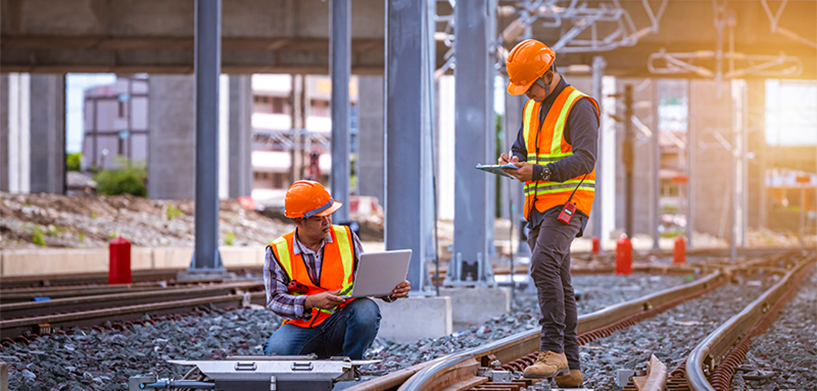The condition of public transit infrastructure in the United States is declining, causing increased traffic, delays and profit loss. It’s evident improvements are needed to meet increasing transit demands expected in the coming years.
The American Society of Civil Engineers (ASCE) gave the country’s transit system a grade of D- in its 2021 report, proving that improvements are necessary. “Over a 10-year period across the country, 19% of transit vehicles, and 6% of fixed guideway elements like tracks and tunnels were rated in ‘poor’ condition,” stated the ASCE’s overview of America’s transit system. “Currently, there is a $176 billion transit backlog, a deficit that is expected to grow to more than $270 billion through 2029.”
Adhering to State of Good Repair (SGR) requirements, standards set by the U.S. Federal Transit Administration (FTA), is an essential step operators need to take to make sure their systems improve and safety and efficiency are maintained. Digitalization can help agencies meet, and even exceed, SGR requirements.
Digital technology answer to improved asset management
Digitalization of infrastructure planning and operations is the solution for slashing maintenance costs, improving service quality and reliability, maximizing the use of assets, improving environmental sustainability and increasing revenue. Through digital transformation, network operators can streamline planning, design, construction, operations and maintenance; optimally leverage and deploy assets, infrastructure and their workforce; and improve network efficiency and reliability.
Digital reality technologies such as high-precision imaging, laser and radar sensors allow agencies to capture and measure track and corresponding facilities in 3D, avoiding the costs and worker safety issues associated with field inspections.
Using a digital twin, agencies can combine asset, spatial and other data spread across multiple systems, departments and formats into an integrated rail information system and common operational picture.
Enterprise asset management (EAM) systems allow rail organizations to understand all their operational systems, see how assets work together and improve efficiency, ensure reliability, maximize the service life of equipment and prevent unplanned downtime by automatically adjusting preventative maintenance schedules. They can also maximize the productivity and longevity of equipment by precisely tracking usage, minimizing inventory costs, maximizing workforce productivity and efficiently supervising inspections. A digital twin can extend the usage of EAM systems, providing completely different insights of an asset’s condition. In addition, the sources of data that can be included in a digital twin can assist in identifying areas of the rail infrastructure that may require addressing outside of normal preventative maintenance schedules.
These data-driven technologies, powered by 3D and AI capabilities, combine to create a complete, dynamic digital twin of a rail organization’s infrastructure and assets to modernize railway safety, security and infrastructure management, pushing it beyond simply complying with SGR requirements and ensuring the future of the organization.
TAM plans
As part of complying with SGR requirements, according to the FTA, “Every agency must develop a transit asset management (TAM) plan if it owns, operates, or manages capital assets used to provide public transportation and receives federal financial assistance under 49 U.S.C. Chapter 53 as a recipient or subrecipient.” TAM plans must “Outline how people, processes, and tools come together to address asset management policy and goals; provide accountability and visibility for furthering understanding of leveraging asset management practices; and support planning, budgeting, and communications to internal and external stakeholders.”
Transit agencies can easily adopt a proactive approach to maintaining their assets and achieve more accurate, timely preparation of their TAM plans through digital technologies that extend their traditional operating methodologies.
When funding is an issue, there are federal and nonfederal grants available that can help alleviate the demands rail systems are experiencing and will continue to experience more intensely if action isn’t taken. Meeting SGR requirements is compulsory, exceeding them is advantageous, so investing in digital transformation solutions is clear.
Learn more
Ready to get on track? Find out more about Hexagon’s digital transformation solutions for rail.















